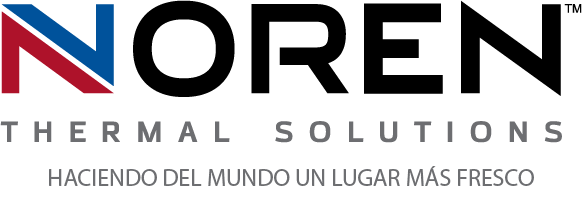 There are several different ways for addressing electrical waste heat and preventing systems from overheating. Heat exchangers became a staple for most applications because of the way in which they approach this process. In many cases, that includes phase-change processes that provide highly effective passive cooling for a wide variety of applications in most industries. Unlike more conventional HVAC-based solutions, phase-change-powered heat exchangers use the natural phase-change properties of an eco-friendly cooling fluid to collect, transfer, and dissipate heat safely and continuously. This not only simplifies the electrical thermal management process, but also creates several other benefits for most types of companies.
There are several different ways for addressing electrical waste heat and preventing systems from overheating. Heat exchangers became a staple for most applications because of the way in which they approach this process. In many cases, that includes phase-change processes that provide highly effective passive cooling for a wide variety of applications in most industries. Unlike more conventional HVAC-based solutions, phase-change-powered heat exchangers use the natural phase-change properties of an eco-friendly cooling fluid to collect, transfer, and dissipate heat safely and continuously. This not only simplifies the electrical thermal management process, but also creates several other benefits for most types of companies.
Utilizing phase-change cooling methods
A fluid’s latent heat of vaporization describes the amount of heat it can withstand before evaporating (changing its phase). Heat exchangers utilize this latent ability by creating a way to naturally transfer the evaporated fluid to a cooler area of the unit, such as a heat sink, where it can release the heat and change back into a liquid phase. For example, within a thermosyphon design, the heated fluid’s transfer is facilitated by gravity, creating an easily sustainable, highly cost-effective, and consistently reliable passive cooling solution. Other heat exchanger types, including custom-designed cold plates, use the same or similar methods to provide the same level of eco-friendly thermal management.
Benefits for nearly every industry
The advantages of passively cooling electronic equipment, control panels, and other enclosures have been prominent in every industry where heat exchangers have been implemented. For example, changing out traditional solutions like air conditioners for more advanced heat exchangers has made it easier and less cumbersome to keep large-scale manufacturing equipment properly cooled. Solutions that are smaller but increasingly more powerful, such as automated mechanisms and advanced electronics, have also been made possible thanks to the ability of heat exchangers to streamline thermal management.
Customizing the right thermal solutions
Because every application is different, many companies benefit even greater from having their thermal management solutions custom-designed. Applications that involve proprietary or unique technologies may require highly specific and equally unique heat transfer solutions. Using phase-change cooling, along with methods such as natural/forced convection and conduction, custom thermal solutions give designers and engineers freedom to create more powerful and more innovative technologies. Systems that utilize older equipment also benefit by extending the life and improving the productivity of those systems, thanks to more advanced passive cooling solutions.
For more information about phase-change heat exchangers and passive cooling, call Noren Thermal Solutions in Taylor, TX, at 866-936-6736.







